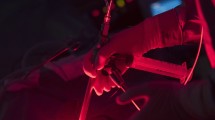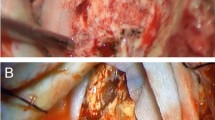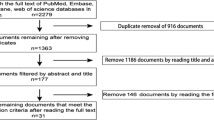Abstract
Glioblastoma multiforme (GBM) carries dismal prognosis and cannot be eradicated surgically because of its wide brain invasion. The objective of this prospective randomised controlled trial was to evaluate ALA and Photofrin® fluorescence-guided resection (FGR) and repetitive photodynamic therapy (PDT) in GBM. We recruited 27 patients; 13 were in the study group and 14 were in the control group. The mean survival of the study group was 52.8 weeks compared to 24.6 weeks in the control group (p < 0.01). The study group gained on average 20 points on the Karnofsky performance score (p < 0.05). There were no differences in complications or hospital stay between the two groups. The mean time to tumour progression was 8.6 months in the study group compared to 4.8 months in the control group (p < 0.05). Therefore, ALA and Photofrin® fluorescence-guided resection and repetitive PDT offered a worthwhile survival advantage without added risk to patients with GBM. A multicentre randomized controlled trial is warranted to confirm these results.






Similar content being viewed by others
Explore related subjects
Discover the latest articles and news from researchers in related subjects, suggested using machine learning.References
Devaux BC, O’Fallon JR, Kelly PJ (1993) Resection, biopsy and survival in malignant glial neoplasms, a retrospective study of clinical parameters, therapy and outcome. J Neurosurg 78:767–775
Obwegeser A, Ortler M, Seiwald M, Ulme H, Kostron H (1995) Therapy of Glioblastoma multiforme, a cumulative experience of 10 years. Acta Neurochir (Wein) 137:29–33
Peng Q, Warloe T, Berg K, Moan J, Kongshaug M, Giercksky KE, Nesland JM (1997) 5-Aminolevulinic acid-based photodynamic therapy. Clinical research and future challenges. Cancer 79:2282–2308
Stummer W, Pitchimeier U, Meinel T, Wiestler OD, Zanella F, Reulen HJ (2006) Fluorescence-guided surgery with 5-aminolevulinic acid for resection of malignant glioma: a randomized controlled multicentre phase III trial. Lancet Oncol 7:392–401
Stummer W, Stepp H, Moller G, Ehrhard A, Leonhard M, Reulen HJ (1998) Technical principles for Protoporphyrin IX fluorescence guided microsurgical resection of malignant glioma tissue. Acta Neurochir (Wein) 140:995–1000
Stummer W, Novotny A, Stepp H, Fritsche C, Goetz AE, Kiefmann R, Reulen HJ (2000) Fluorescence guided resection of glioblastoma multiforme by using 5-aminolevulenic acid induced porphyrins; a prospective study in 52 consecutive patients. J Neurosurg 93:1003–1013
Origitano TC, Karesh SM, Henkin RE, Halama JR, Reichman OH (1993) Photodynamic therapy for intracranial neoplasms: investigations of photosensitizer uptake and distribution using indium-111 photofrin-II single photon emission computed tomography scans in humans with intracranial neoplasms. Neurosurgery 32:357–364
Eljamel S (2004) Photodynamic assisted surgical resection and treatment of malignant brain tumours; technique, technology and clinical application. Photodiagnosis and Photodynamic Therapy 1:93–98
Hill JS, Kaye AH, Sawyer WH, Morstyn G, Megison PD, Stylliet SS (1990) Selective uptake of hematoporphyrin derivative into human cerebral glioma. Neurosurgery 26:248–254
Thomas JP, Hall RD, Giroti AW (1987) Singlet oxygen intermediary in the photodynamic action of membrane bound hematoporphyrin derivative. Cancer Lett 35:295–302
Ibbotson SH, Moseley H, Brancaleon L, Padgett M, O’Dwyer M, Woods JA, Lesar A, Goodman C, Ferguson J (2004) Photodynamic therapy in dermatology: The Dundee experience. Photodiagnosis and Photodynamic Therapy 1:211–213
Hill JS, Kaye AH, Sawyer WH, Morstyn G, Megison PD, Stylliet SS (1990) Selective uptake of hematoporphyrin derivative into human cerebral glioma. Neurosurgery 26:248–254
Eljamel MS (2003) New light on the brain; the role of photosensitizing agents and laser light in the management of malignant brain tumors. Tech Can Res Tr 2:303–309
Kaye AH, Hill JS (1988) A review of photoradiation therapy in the management of central nervous system tumours. Aus NewZ J Surg 58:767–780
Kaye AH, Morstyn G, Apuzzo ML (1988) Photoradiation therapy and its potential in the management of neurological tumours. J Neurosurg 69:1–14
Kaye AH, Morstyn G, Brownbill D (1997) Adjuvant high-dose photoradiation therapy in the treatment of cerebral glioma, a phase 1–2 study. J Neurosurg 67:500–505
Kostron HM, Weiser G, Fritsch, E, Grunert V (1987) Photodynamic therapy of malignant brain tumours, clinical and neuropathological results. Photochem Photob 46:937–943
Kostron H, Fritsch E, Grunert V (1988) Photodynamic therapy of malignant brain tumours; a phase I/II trial. Br J Neurosurg 2:241–248
Marks P (1999) Photodynamic therapy for central nervous system tumours; achievements and prospects. Br J Neurosurg 13:349–351
Muller PJ, Wilson BC (1987) Photodynamic therapy in primary brain tumours; clinical effects, postoperative ICP and light penetration of the brain. Photochem Photob 46:929–935
Muller PJ, Wilson BC (1996) Photodynamic therapy. Neuroncol 11:249–256
Muller PJ, Wilson BC (1996) Photodynamic therapy for newly diagnosed supratentorial gliomas. J Clin Lasers Med Surg 14:263–270
Muller P, Wilson BC (1991) Photodynamic therapy of brain tumours—postoperative field fractionation. J Photochem Photobio 9:117–119
Muller PJ, Wilson BC (1995) Photodynamic therapy for recurrent supra tentorial gliomas. Semin Surg Oncol 11:346–354
Muller PJ, Wilson BC (1985) Photodynamic therapy; cavitary photoillumination of malignant cerebral tumours using a laser coupled inflatable balloon. Can J Neurol Sciences 12:371–373
Origitano TC, Reichman OH (1993) Photodynamic therapy for intracranial neoplasms; development of an image-based computer assisted protocol for photodynamic therapy of intracranial neoplasms. Neurosurgery 32:587–595
Powers SK, Cush SS, Walstad DL, Kwock L (1991) Stereotactic intratumoral photodynamic therapy for recurrent malignant brain tumours. Neurosurgery 29:688–695
Propovic EA, Kaye AH, Hill JS (1995) Photodynamic therapy for brain tumours. Semin Surg Oncol 11:335–345
Bisland SK, Lilge L, Lin A, Rusnov R, Wilson, BC (2004) Metronomic photodynamic therapy as a new paradigm for photodynamic therapy: rationale and preclinical evaluation of technical feasibility for treating malignant brain tumours. Photochem Photobiol 80:22–30
Acknowledgements
We are grateful to the Laser technicians, nurses, other therapists and doctors, who assisted in delivering care and therapy to our patients.
This study was funded by Barbara Stewart Cancer Trust, a charitable organisation dedicated for funding the advancement of photodynamic techniques in cancer treatment.
Author information
Authors and Affiliations
Corresponding author
Rights and permissions
About this article
Cite this article
Eljamel, M.S., Goodman, C. & Moseley, H. ALA and Photofrin® Fluorescence-guided resection and repetitive PDT in glioblastoma multiforme: a single centre Phase III randomised controlled trial. Lasers Med Sci 23, 361–367 (2008). https://doi.org/10.1007/s10103-007-0494-2
Received:
Accepted:
Published:
Issue Date:
DOI: https://doi.org/10.1007/s10103-007-0494-2




